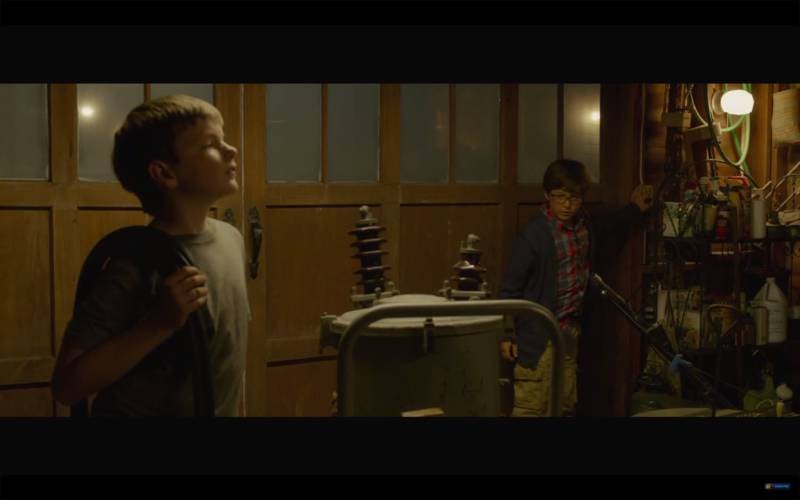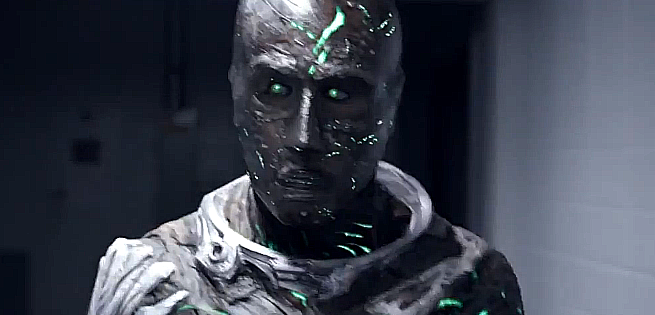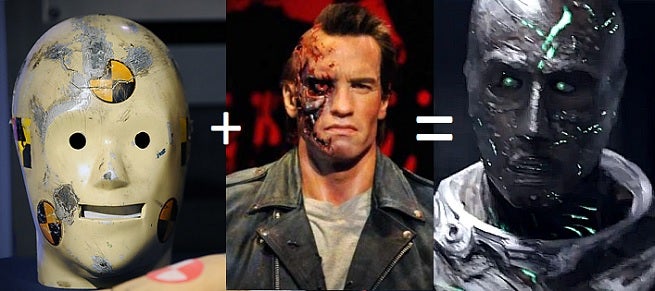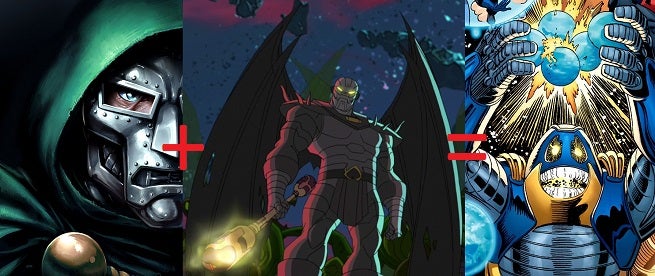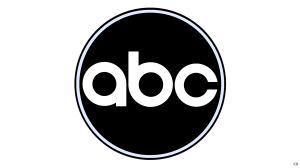Josh Trank and Fox’s new Fantastic Four is kind of a disaster.
Videos by ComicBook.com
Not the movie itself, necessarily — but the PR on this film has been abysmal from day one and the box office is in a tailspin after Trank revealed that the studio hijacked his movie and, he claims, broke it.
The movie itself was…eh. Our critic Brandon Davis gave it a 5.7 out of 10, and that seems about right, frankly. There are a great many fans who are saying it’s their least favorite comic book movie of all time, though, so whether you thought it was terrible or not, it’s clear that some things weren’t working.
What were they, you ask?
The Pacing
For the first hour or so of the movie, I wasn’t supremely entertained, but really, I didn’t have any problem with it. There was some good stuff, some ideas that had potential, and some glimmers of what was to come.
Unfortunately, a lot of it “was to come” in a sequel, apparently, as there was no payoff for a lot of stuff, while quite a bit of screen time was dedicated to…not much.
There’s just some sloppy storytelling. There was a thing with a pocket knife, where Ben Grimm used it in his and Reed’s very first experiment together. Later, he brought it as a gift for Reed when the pair were dropping him off at the Baxter Building.
That pocket knife felt like it was supposed to be Chekhov’s gun — that it would come up again at a key moment later. Instead, it’s just…I don’t know. It’s a thing that we didn’t need to spend an extra forty seconds on.
It’s possible the knife was meant to be a “farewell” gift to Reed — a quiet acknowledgment that Ben believed the two were separating forever when Reed took the first big step in his new life. That would have made the seemingly-random gift work better narratively. It happens far too early, though, and the audience knows Ben will be back, so if that was the aim, it’s almost as bad as leaving an unresolved Chekhov’s gun on the table.
It might seem like I’m overthinking the knife, and maybe I am, but there are a bunch of these things, and given the fact that a great many fans were so starved for action in the first chunk of the film that they couldn’t even agree with my “nothing really wrong with it” assessment, every forty seconds wasted on something that goes nowhere is forty seconds that arguably should have been used to hammer out the problems with the film’s conclusion.
Oh, yes — the film’s conclusion.
It’s been pointed out that this movie has almost no middle. There’s the origin story, there’s the big about Ben and later Johnny and Sue working or potentially working for the military, and then there’s the big fight with Doom.
Narratively, it doesn’t work at all. The military (and Reed on the lam) stuff is far too condensed and frankly not nearly interesting enough to count as a second act. It’s not even a little bit memorable, and leaves fans with the impression that nothing at all happened during that chunk of time.
It’s also utterly needless. It seems like it was inserted just to fill the time when Reed is gone. But why does there have to be a one-year time jump? Why did Reed have to not be there? What purpose did it serve making Ben mad at him when there’s no real resolution there?
That flimsy distinction between the origin story and the battle with Doom is so infuriatingly inadequate that it throws into even sharper relief just how shabby the final battle itself is.
The fight with Doom plays out like you’re reading a comic book.
That’s good, right? I mean, it’s a comic book movie, so of course it plays like that, right?
Right?
No. Because this is a major, feature-length motion picture. The climactic battle shouldn’t play out like it was written for a 20-page comic that takes somebody five minutes to read in its entirety. Fights that take place in a 20-page comic are going to be restricted by the available space — and that’s not something that should be a concern for a movie like this.
…Which leads us to…
Doom
Holy f—ing s–t, how can they keep f—ing up Doctor Doom?!
Last time around, they had that awful-looking suit, but underneath it all you could see the fundamentals of an alright design. The biggest issue seemed to be that they lacked either the technology, the materials, the production values or a combination of the three to really make it work.
So chuck that, of course, and rather than going with something that stands shoulder to shoulder with The Thing as “effects you clearly spent some time on,” you say “to hell with it,” and create this thing…
…it looks like a Crash Test Dummy had sex with The Terminator — no, I’m sorry, not The Terminator. A Madam Tussaud’s wax statue of a Terminator — then had the baby in an acid bath.
Okay, okay, let’s forget about the look. We’ve known for a good, long while that he was going to look like that.
But, hey! They did bring over something from the previous films.
It wasn’t anything good, but it was…something.
Here, we get yet another story of lovelorn Doom who is fixated on Sue Storm. Why?! Why is this a thing? Why is Sue’s only narrative value to the origin story to be treated as the thing all the boys are fighting over?
That might sound overtly feminist — and there’s a little of that peeking in around the edges — but on a more basic level, it’s just…it’s lazy storytelling. “Why does Doom hate Reed?” You may ask. “Oh, hell, I don’t know,” say the executives behind these films. “Maybe he stole his girlfriend?”
To be fair, they do try to give him non-romance-related motivation at some point in the film…
…and it makes no f—ing sense.
Von Doom makes one off-the-cuff reference, fairly early, about the idea that maybe, Dr. Storm’s highfalutin’ plans to the contrary notwithstanding, the earth isn’t actually worth saving. It didn’t seem like life-altering stuff, really; it felt more like a college freshman who just read Fight Club for the first time. Anyway, apparently that was all the justification they needed for his heel turn and the minute he gets super powers, he becomes immediately and irrevocably bent on Earth’s destruction because…reasons?
Yeah, I don’t get it. In seemingly trying to marry Doctor Doom with Annihilus, they seem to have inadvertently created The Anti-Monitor instead — a villain whose whole raison d’être is to destroy the matter universe and convert its mass into anti-matter energy in order to expand his own domain.
Only it makes sense for the Anti-Monitor, because he isn’t a hipster hermit who gets off on…um…closing his blinds aggressively at people. The Anti-Monitor is a force of nature. He’s essentially a big, dumb, cruel animal with enough cunning and cleverness to make him extremely dangerous. He isn’t — as Doom has always been depicted, and claims to be here — a genius.
The film also takes a blind stab at giving Doom a justification for his hatred of Reed Richards by saying — literally moments before the end of the movie — that he found Richards “smug” and that Reed “always thought you were smarter than me.”
That’s a fair reason to dislike somebody, and it actually tracks with Reed and Victor’s relationship, historically speaking.
The problem?
There was absolutely nothing to justify that in-story.
We saw Reed and Victor working together well, apparently respecting one another’s abilities and accomplishments. Victor showed no signs of being mad that Reed, Ben and Johnny left him behind on Planet Zero because, well, Doom wanted to be there anyway. The only time we ever saw the two disagree was when Doom yelled at Reed for his “unprofessional” flirting with Sue. Reed responded by…umm…leaving to take a nap.
That’s the stuff of literature’s greatest rivalries, right there folks.
And of course all of this is compounded by the fact that it’s clear nobody involved with the film on any level had any f—ing idea what to do with Doom. Many of the flaws in this movie could have been fixed with some slight tweaks, or could be chalked up to things that happened while Trank and Fox squabbled over who would control more of the film.
But Doom? Well, Trank’s version would have sucked just as much as what we eventually ended up with, if literally everyone involved is to be believed. The whole Doom-as-an-antisocial-hacker thing wasn’t some half-baked Latino Review rumor that swept the Internet on Thursday and was disproven by Monday lunch. It was apparently the real deal, and you can see the jarring attempts to cover it up in reshoots.
And before we totally abandon the seemingly bottomless chasm of ineptitude that is how the film handled Marvel’s best villain, let’s look at one more thing: his eeeeeevil.
Victor Von Doom is kind of a jerk in the film, and then he’s left for dead in another dimension. When they return, he has powers, feigns injury, comes to Earth and starts wrecking the place. Apparently he wanted his domain to “eat” Earth but he couldn’t open up the black hole between the two worlds without Reed Richards’ help.
Okay, fine. All a bit odd and silly but…it tracks. It makes sense, in that comic book kind of way.
Let’s leave aside for the moment the fact that his reason for wanting Earth to die is kind of stupid and makes no sense — and the fact that his reason for disliking Reed Richards is kind of stupid and makes no sense. Put all of that in a box and tuck it away.
Narratively, they don’t properly convey that he’s a bad guy until way too late.
When he’s approached by Tim Blake “Totally Not Mole Man” Nelson, Doom seems affronted by what the man has done to The Thing, his designs on the rest of the Fantastic Four and his motivations for invading Doom’s dominion. He kills the guy…and frankly, hooray.
Okay, yes, he’s a U.S. military contractor and Doom shortly thereafter starts murdering U.S. soldiers. None of that is really acceptable.
…Well, the soldiers aren’t. The contractor, given that for the ten minutes prior to that he was being built up as essentially the film’s biggest threat — an officious and greedy man who would force the heroes into military service? Well, we can take him or leave him.
Unfortunately, that’s all too common. Since they built up almost nothing around the base except “This is where the Four are being abused by the government,” the stakes of what’s going on there are unclear. Say what you will about Man of Steel, but as a viewer it’s easy to see what the threat is and how it has to be dealt with. When Doom killed Totally Not Mole Man, I turned to my seat mate and said, “So…is Doom the hero now?” And I was half-serious.
Besides that, the way he uses his powers — while, yes, seemingly a tribute to Cronenberg’s Scanners — was absolutely not right for the film’s tone.
While the death of Not Mole Man was gruesome and you even for for him a bit in his final moments, the soldiers Doom went on to slaughter were essentially just props. Doom blinked at them and their heads exploded in blobs of poorly-rendered CG blood. It was…I’m sorry, but it was comical.
Innocent characters and American soldiers being killed is no laughing matter, except that the way the scene was filmed, it absolutely looked goofy. The whole thing felt a little like Kingsman: The Secret Service, which is ironic when you consider that Matthew Vaughn was rumored to have been the director who came in to rework the movie in reshoots, when Fox decided it wasn’t working. The fact that the stakes were so high and the gravity of the situation so great only served to throw the absurdity of the poor effects and silly scripting into sharper relief.
Okay, I think that’s all I have to say about Doom for now.
Clobberin’ time
Alright, so this one isn’t a huge deal in terms of the narrative, but it’s baffling that the “it’s clobberin’ time” catchphrase could be so badly misused. Who thought it was a good idea that Ben’s signature line should be something he got from when his older brother used to beat him up as a kid?
Oh, yeah. The same people who thought a movie called Fantastic Four should be bathed in shades of black.
The tone and feel of the film
Certainly given the earliest issues of The Fantastic Four — in which the team didn’t wear traditional superhero costumes, battled monsters and was generally more science-fiction and less superheroic — could have provided an interesting first film.
Unfortunately, while there were bits of that here and there, it ultimately isn’t the film we got.
Instead we got a movie that paid a great deal of lip service to the importance of SCIENCE! but ultimately did very little with it. It gave us compelling and gruesome bit of body horror in the transformations, but then did very little with it. It gave us an alternate dimension, but then did very little with it. It gave us the Fantastic Four and, ultimately, did very little with them.
While it’s easy to pick at Fantastic Four for being too dark and “gritty,” considering the prevailing mood in most of the source material, there could have been an interesting artistic or creative decision in that move. Ultimately, though, we got a movie whose pervasive, persistent message was that it didn’t give a f–k about the source material or the audience. A movie whose tone may have been dark, sure, but ultimately what’s worse than that is that the whole feel and language of the movie projected very little ambition or excitement at all.



